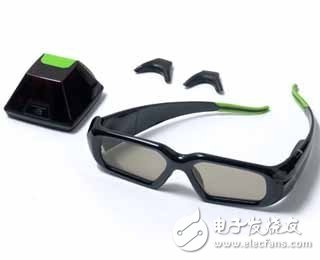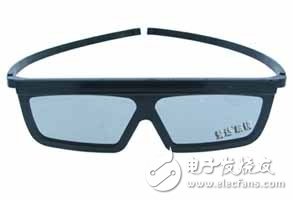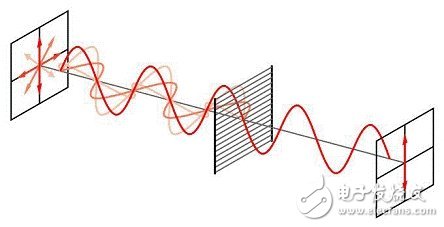Introduction to Stereo Imaging Technology Stereoscopic imaging principle Human eyes are 6 to 7 cm apart and have a certain distance. Therefore, when observing a three-dimensional object, since the two eyes are horizontally separated at two different positions, the observed images of the objects are different, and there is a difference between them. An aberration, due to the existence of this aberration, through the human brain, we can feel the depth of a three-dimensional world, this is the so-called stereoscopic principle. According to the principle of stereo vision, if we can let our left and right eyes see two images taken at different positions, we should be able to feel a three-dimensional space from these two images. From the previous analysis we can know that different viewing angles will see different images. Because if we place the grating perpendicular to both eyes, because the angle of view of the two eyes is different, the two eyes will see two different images, resulting in a three-dimensional effect. Often in order to get a better stereo effect, I don't just make two images, but use a sequence of stereo images. In this case, depending on the position of the observation, I only see two of the sequences at the same time. With the sub-image, you can feel the three-dimensional effect. Red and blue glasses In this mode, the image displayed on the screen will be color filtered by the driver first. The scene rendered to the left eye will be filtered out of red light, and the scene rendered to the right eye will be filtered out of cyan light (red light complementary light, green light plus blue light). The viewer then uses a pair of bi-colored glasses so that the left eye can only see the image of the left eye, the right eye can only see the image of the right eye, and the correct color of the object will be synthesized by the brain. This is the lowest cost solution, but generally only suitable for viewing scenes with colorless wireframes. For other display scenes, the loss of color information may cause viewer discomfort. This stereo approach has been eliminated in high-end applications. Red, green and red glasses have been basically eliminated Active stereo imaging Active stereo display is to use a projector to project an image, project the signal seen by the left eye at a certain moment, and project the signal seen by the right eye at the next instant. When the left eye signal is projected, a control signal is sent from the workstation to control the left lens of the active stereo glasses to open it. At this time, the lens of the right eye is closed; otherwise, when the image of the right eye is projected, the lens of the left eye is closed. In short, active stereo glasses are controlled. For any brand and model of projector, if you can do active stereo display, the output light utilization rate must be less than 16%. Because: when the projector performs stereo image display, the actual brightness of the left and right images output is 45% of the nominal stereo brightness value (the nominal value of the projector manual) (the ideal value is 50%), and the brightness of the light passes through the liquid crystal stereo lens. At least 65% reduction, so the remaining brightness is 45% * 35% "16%". If the brightness factor is particularly important, the effect of the active stereo display with a low-brightness projector is unsatisfactory. For example, a projector with a brightness of 4000 lumens has an actual active stereo brightness of only 640 lumens, which is lower than that of a normal movie theater (800 lumens). If the application requires a bright environment, this indicator will not work. Active stereo projection, light utilization is only 16% advantage: 1. The number of projectors is small. 2. The system structure is simple. Disadvantages: 1. The cost of glasses is high. Each pair of glasses needs about 500 yuan, and it is easy to be damaged. 2. The viewer feels uncomfortable. Due to the use of the liquid crystal film, the entire stereoscopic glasses are heavy; at the same time, the rapid opening and closing of the left and right optical glasses, (60HZ / S) for a long time will lead to dizziness. 3. Light utilization is too low, only 16%. 4. High requirements for graphics generation hosts. Passive stereo imaging The passive stereo technology is to output the image signal to the signal transfer device, and then to two vertically superimposed projectors, projecting one image at the same time with two projectors, and one projector to cast a right eye image, one for the projector. The projector casts a left-eye image, and the two projectors adopt different polarization directions, and then achieve a stereoscopic projection effect through the circumferentially polarized polarized lenses of the left and right eyes of the passive stereo glasses. The stereoscopic projection mode is the best stereoscopic projection technology at present, and the luminous efficiency of the projection is very high, and can reach about 50%. At the same time, because there is no left and right eye shadow switching back and forth, there is no dizzying problem in the active stereo projection, which is suitable for long time viewing. The price of the stereo glasses is very cheap, the weight is light, and there is no feeling of fatigue when worn for a long time. Because it does not need to be synchronized with the infrared emitting device, the user can move around at will, and the flexibility is high. Passive stereo has become the mainstream technology of stereoscopic projection. Polarized stereo glasses, light and simple advantage: 1. Glasses are low cost and easy to maintain. 2. High light utilization, about 38%. 3. The host requirements for graphics generation are low. Disadvantages: 1. The number of projectors is twice as large as the active one. 2. The system structure is slightly more complicated. Introduction to polarization technology Passive stereo is achieved by the polarization of light. The polarization of light has both internal and external implementations. Linear polarization is a passive stereo solution used in the early days. The principle is to polarize the off-axis of the projector along the X and Y axes, and then match the gratings in the X and Y directions of the stereo glasses to realize stereoscopic images. The biggest disadvantage of this method is that the polarizer does not move in direction, and the light can only be transmitted at a fixed angle, so the viewer's head cannot be offset, and the angle of view is small, so it has now been eliminated. Circumpolar polarization is a new polarization method invented by Barco's patents in recent years. The principle is that when the light propagates, the 360 ​​degrees of the vertical propagation direction is transmitted by the light wave. The polarization of light is actually the principle of displaying light waves in a particular direction. The principle of the circumferential polarization technique is that the polarization direction of the light can be rotated and changed, and the direction of rotation of the light seen by the left and right eyes is opposite. Based on the circular polarization technique, the observer's head can move freely because the change in direction of the light does not affect the display. Passive stereo projection using the principle that the polarizer only filters specific rays
We design and produce our carts, ensuring that the product is quality controlled to meet our standards and the standards of testing for hard metals and other harmful materials. Our product line includes a variety of vaporizer cartridges, Disposable Vape pens, and batteries. Our vape cartridges come in a variety of sizes and options including intake hole size and different metallic finishes.
We offer a variety of Custom Vape Cartridges, Vape Pen Batteries, Disposable Vape Pens, and many packaging choices to go with them! If you are interested in only vaporizer packaging
Customized Disposable Electronic Cigarettes,OEM VAPE PEN,Disposable vape pen OEM,Customized VAPE Shenzhen Ousida Technology Co., Ltd , https://www.osdvape.com




April 30, 2024